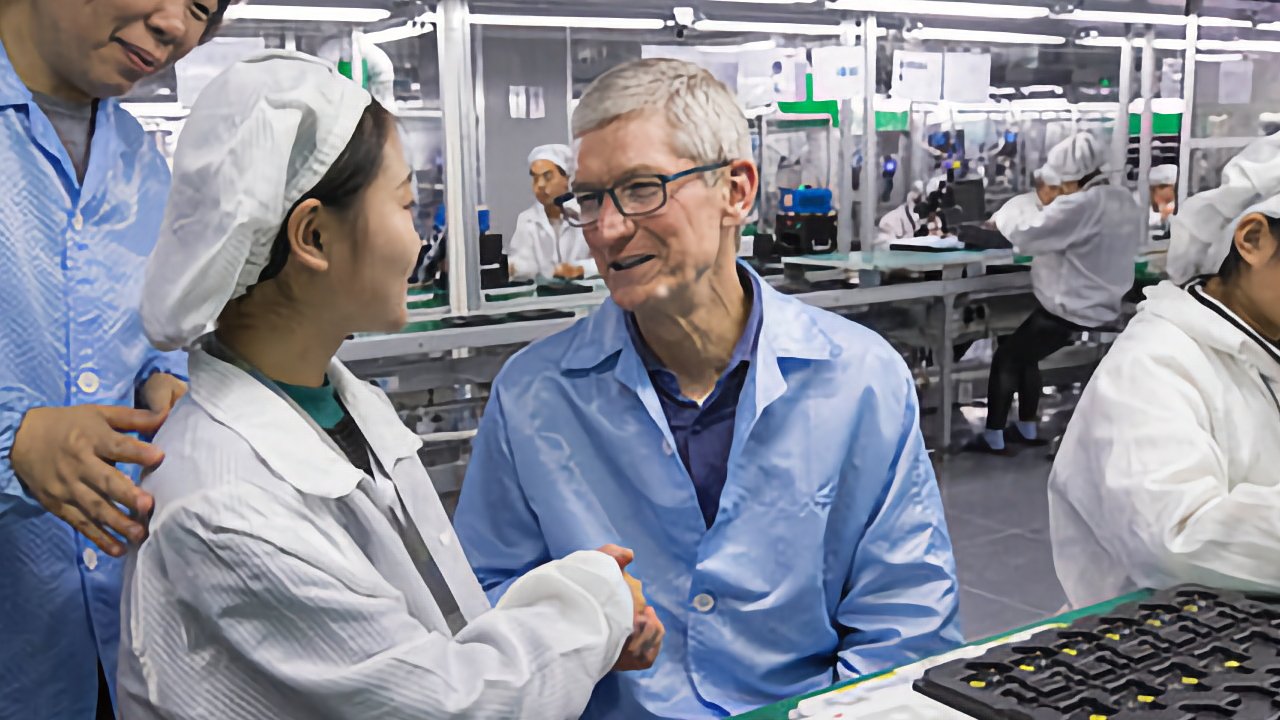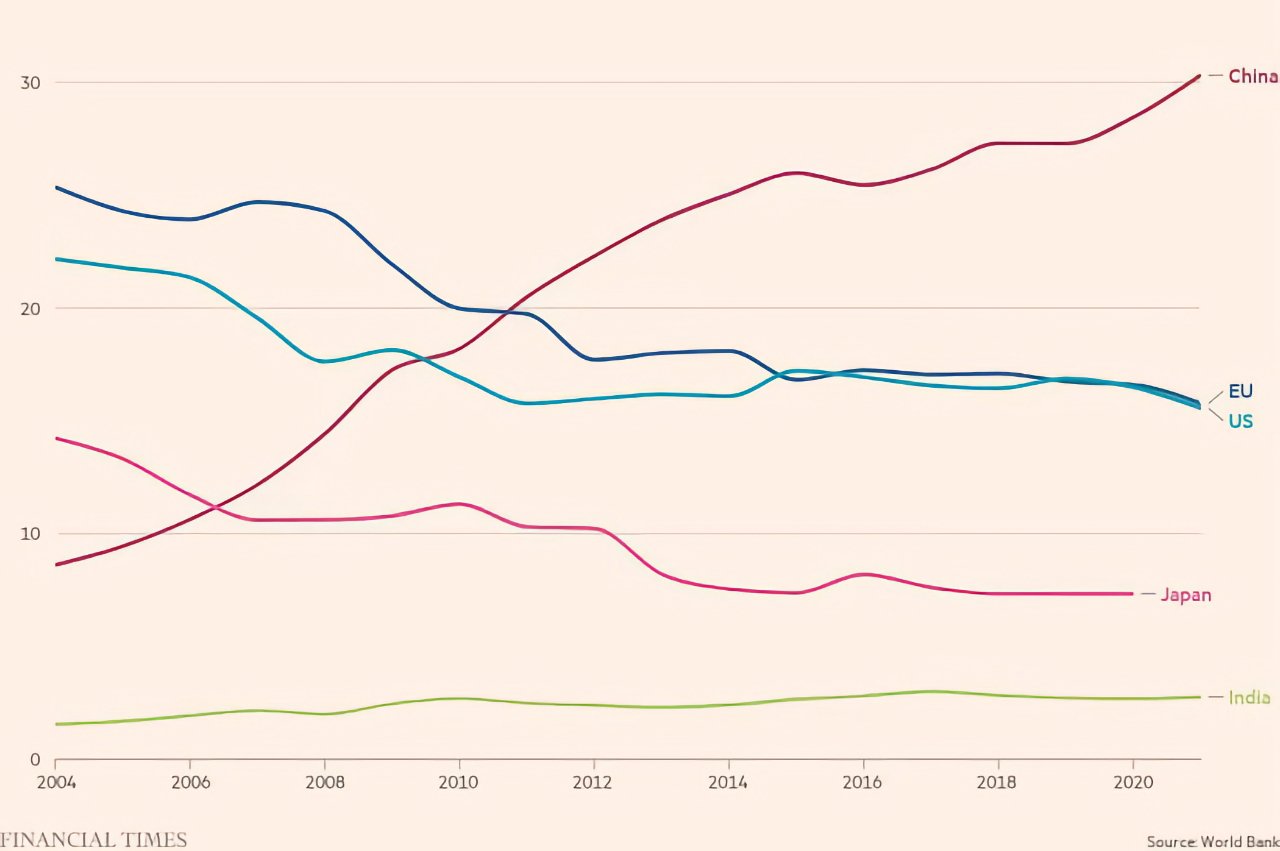A new report says Apple has trying to move operations away from China for a decade, and if it can ever accomplish it, the move will take another 20 years.
Apple and all major technology firms have been working to reduce their dependency on China, because of increased tensions between the country and the US, plus the impact of COVID measures. However, the Financial Times reports that Apple is by far the most reliant on China, and so much so that it may never be able to completely move away.
Reportedly, Microsoft's revenues from hardware are only 6% of its total. Samsung closed its plants in China in 2019, although that was less because of wanting to move, and more because its local market share had fallen from 20% to under 1%.
The Financial Times says that in comparison, Apple directly employs 14,000 people in China, and most of its 1.5 million workers in the global supply chain are in the country.
Apple, and its main iPhone supplier Foxconn, have taken high-profile steps to move manufacturing to India, and Vietnam However, a former Microsoft executive told the publication that Vietnam, for example, is "years and years" away from being truly competitive.
"It was incredibly challenging [for us] in terms of ramp up, set up, and getting that working the way it was working in China," the unnamed executive said. "The infrastructure was either very new and hadn't been proven — or it didn't exist."
"We had challenges with sourcing components, because all of our tier-two, tier-three sourcing was still all in China," he or she continued. "So we ended up shipping a lot of semi-finished goods from China to Vietnam for final assembly."
The executive may have been describing the situation when Microsoft bought Nokia in 2013, and moved production to Vietnam. According to the Financial Times, Nokia also then faced problems with the weather, inadequate transportation — and even organized crime.
It all comes back to China
The issue of sending parts from China to be just assembled in countries such as India is reportedly routine enough that there is a term for the assembly companies. These suppliers are known as Final Assembly, Test and Pack (FATP).
Currently it's estimated that the number of workers in Chinese factories is greater than the total population of Vietnam. China's own statistics say 293 million people worked in factories in 2021, where 100 million people live in Vietnam.
Even if Apple, or other firms, were able to establish an equivalent supply chain in India, Vietnam, or anywhere else, there would still be the fact that China is a smelting source. So at the very least, raw metal would still come from there.
Apple's commitment to China
Apple has been criticised for its apparent willingness to repeatedly bow to pressure from the Chinese government. But it has also directly spoken about staying in the country, or at least Tim Cook has.
According to the Financial Times, during his 2017 visit to Luxshare, workers asked if Apple was going to move.
"We're not doing that," Cook reportedly replied. "Manufacturing our products requires deep engineering skills, flexible supply chain management, and exceptional quality standards."
"We won't be shifting production for the sake of lowering costs," he continued.
He was reassuring the workers, and he was speaking in 2017 before the Trump administration began putting tariffs on US buyers of goods from China.
Nonetheless, Apple is not going to be making lower quality iPhones or using less capable suppliers, just to cut its dependency on China.
"Apple can't diversify," an unnamed former Apple engineer told the Financial Times. "China is going to dominate labour and tech production for another 20 years."
 William Gallagher
William Gallagher








-m.jpg)






 Brian Patterson
Brian Patterson
 Charles Martin
Charles Martin


 Malcolm Owen
Malcolm Owen

 Christine McKee
Christine McKee
 Marko Zivkovic
Marko Zivkovic









17 Comments
That’s because no other country has the manpower and complete automation will never happen. Unless, of course, the U.S. becomes China by letting in millions upon millions of immigrants and gutting labor laws. Anyone think that will ever happen?
This is quite evident in Apples supplier report.Over 180 of Apples 200 suppliers have some form of presence in China
No kidding. China is headed towards being the dominant power on Earth in a few decades. The new House majority is an indicator where America is headed.